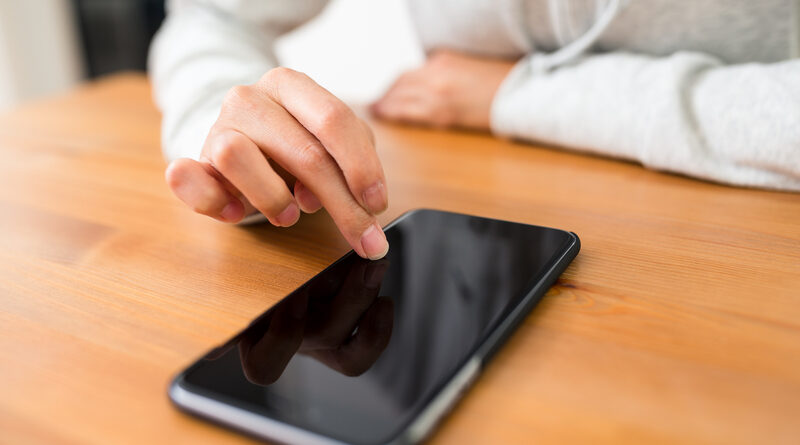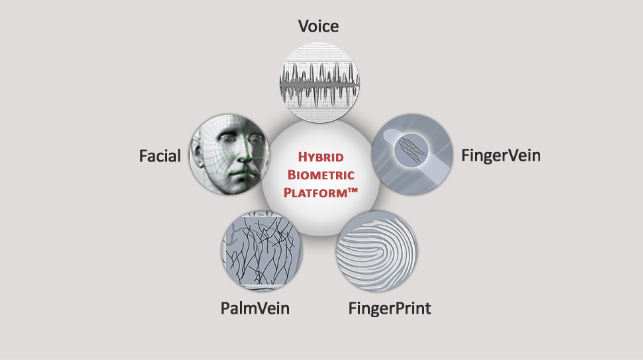Biometrics: History, Origin & How It Affects Our Lives
Just hearing the term biometrics, we draw a picture of the fingerprint in the back of our mind, but, originally biometrics is a term related to our human body itself. The original term “Biometrics” actually refers to measurements and different sorts of calculations that are related to the human body. It is the measurement of human characteristics in a matrix form. Biometric measurements are unique and irreversible depending on their types. This is why in modern day identification biometrics measurements ensure maximum efficiency.
The history of Biometrics originated back in 1981 to identify criminal’s fingerprints to be analyzed and stored. Since then, this practice happens all over the world. However, now biometric authentication has just not become important, but a welcomed in all aspects of our lives. Biometric measurements also have evolved from only fingerprint and now different parts of our body such as finger vein, palm vein, iris scan, voice recognition, facial recognition, brain waves, heart signals, DNA identification, and behavior biometrics.
Breaking the barriers of use in only for criminal identification, biometrics has now evolved to personal security level and reached to cloud computing as well. Biometrics help us change our lives reforming manual tasks into automation and providing that extra layer of security. It is not only affecting our lives only as an individual but also as a community, and even as a species in the environment.
Let us have a quick overview how the biometric technology is affecting our lives.
Security
Undoubtedly the first things that biometric technology makes our lives easy is through enhancing security. Biometric authentication and identification are changing the way we do and see things. Smart mobile devices are now adding an extra layer of security through fingerprint scanner, voice, or facial recognition. Recently, Samsung has added an iris scanner in their latest smartphone. The data center of Google uses multimodal biometric verification to keep track of the security. Biometric visitor management systems like VisitorTrack™ is helping to maintain visitors in any environment and keep a record of their activities on the premise. Also, passwords and pins are too weak in terms of security. Moreover, pins or passwords are hard to remember by most people.
In a recent study performed on Canadians revealed that they tend to forget their pins or passwords and leave any authentication online unfinished. Security checks are boring and tiresome in all the facilities. To automate this process, Japan used facial recognition gates at one of their airport that automatically scans passersby as they go through the gate and match it with the stored images. Many airports now use iris scan as well. Even the upcoming Olympic going to be held in Japan deployed the same facial recognition technology to scan their staff, media representatives, and athletes, as reported by Japan Times. Just recently, on the Ukrainian Border, the country established a biometric border control system to keep track of migrations. These technologies save time, create less hassle, reduce staff costs and maintain maximum efficiency. Such one tool created to help border control forces is SecuredPass™ that allows biometric enrollment of travelers. It is a central system that connects the whole county covering all the aiports, docks passport & also visa offices. No more the old fashioned ways of pins passwords or manual face matching when one’s own body becomes the ultimate password.
Financial Services
Biometric technology is being deployed in financial services worldwide. The Bank of Russia recently authorized mass biometric data enrollment for all the account holders of all the banks of Russia. The plan is to enable an account holder to make any payment, do transactions or apply for a loan just through a smart mobile device that has biometric scanners installed in it. Bank of Cyprus is issuing biometric payment cards for their account holders that will only work when held by the card owner. ATM machines are now using fingerprint, facial recognition or iris scanner to ease access.
People do not have to bring anything or even remember his account number to be able to make a transaction. One of the most significant solution in payment terms was recently provided by WFO and UNHCR in the Zaatari Camp for refugee Syrians situated in Jordan. In the camp, the organizers installed an iris scanning payment system to allow the refugees to be able to purchase what they need from the funding they are receiving without even getting the money in cash. This system automatically scans and identifies the account holder and checks the balance and make the payment. With this system, maximum fraud protection is now possible in terms of donation. CertisID™ is a solution that is specially designed for financial services and it also works to track and identify an employee and also a non-account holder.
Data Access
Previously it was seen that how biometric provides national level security. But it can also provide personal security in terms of valuable data and privacy. Since a long time, Hewlett Packard is using fingerprint access on their laptop PCs. Also, various mobile smartphones are now equipped with different biometric identification technology to provide maximum data security. On Cloud also, the biometric technology is on the rise in popularity.
National and political activities
Biometric systems are the most efficient and secure for governments to have national projects. A great example of this would be back in 2014, Yemen government installed the M2SYS TrueVoter™, biometric voter registration system. This system registers a voter, identifies him or her during the voting process, automatically checks if he or she has voted before. There is no way of fraud since biometric measurements are in use here. Another example can be found in India since the people of India are getting their national ID “Aadhar” card through fingerprint and facial scan registration. Even in Bangladesh recently, smart national ID has been provided that is registered with 10 fingerprints and an iris scan.
Architecture
Emotional architectural designs depict the aesthetic sense of an architect. However, there is no definite way to see how people view a façade or building. Thanks to architect Ann Sussman and designer Janice M. Ward now there is with the help of biometric. They came up with a system that measures the movement of the eye and how long view focus is fixed on a façade. The system then turns it into a heat map to show where we are focusing and depending on what. This system also can be integrated with brainwave scanning and get the exact emotion of the viewer. This indeed is a very good time to be an architect.
Advertising & psychological researchers
Advertising is crucial and for the best result of the campaign, the advertisers are always on the toes to measure the best performance. In many cases to do psychological researchers on viewing of an advertisement, biometric measures such as brain waves, iris movement, heartbeats are being used a measurement of the effects of the campaign. The first company to implement biometric advertisement in daily life was the giant Tesco. They came up with facial detection to personalize ads when customers are on the counter to pay for their gas in gas stations.
Preserving ecosystem
It is not a new thing that poacher activity just made Rhino’s one of the most critically endangered species. To fight back the poachers and create a safe haven for the Rhinos, recently in South Africa an unnamed park has been equipped with the latest biometric security management. They are using heat signatures, facial recognition through CCTV and drones. In addition, during the entrance, every visitor has to go through a biometric fingerprint and facial scanning system. This way not only Rhinos but every animal will from now on be safe from poaching.
Behaviometrics
Behaviometrics is the analyzing of behaviors which is unique from person to person. This analyzes every action of an individual and from then with that data, any level of security or research can be done. Even it can be integrated with a computer to protect personal files, or in a high-security facility to let the right people enter.
Biometrics is technology that adapts to anything. It is a one-stop solution to many security-related problems and with the help of different biometric technology, we are changing the world, and thus changing us.












it hard to imagine our lives without biometrics now a days. I really do not care about the history but I am bit concerned about the future. Like now we have cloud biometrics and biometrics as a service like saas model but what we will see in the future ? I bet it will be something awesome.